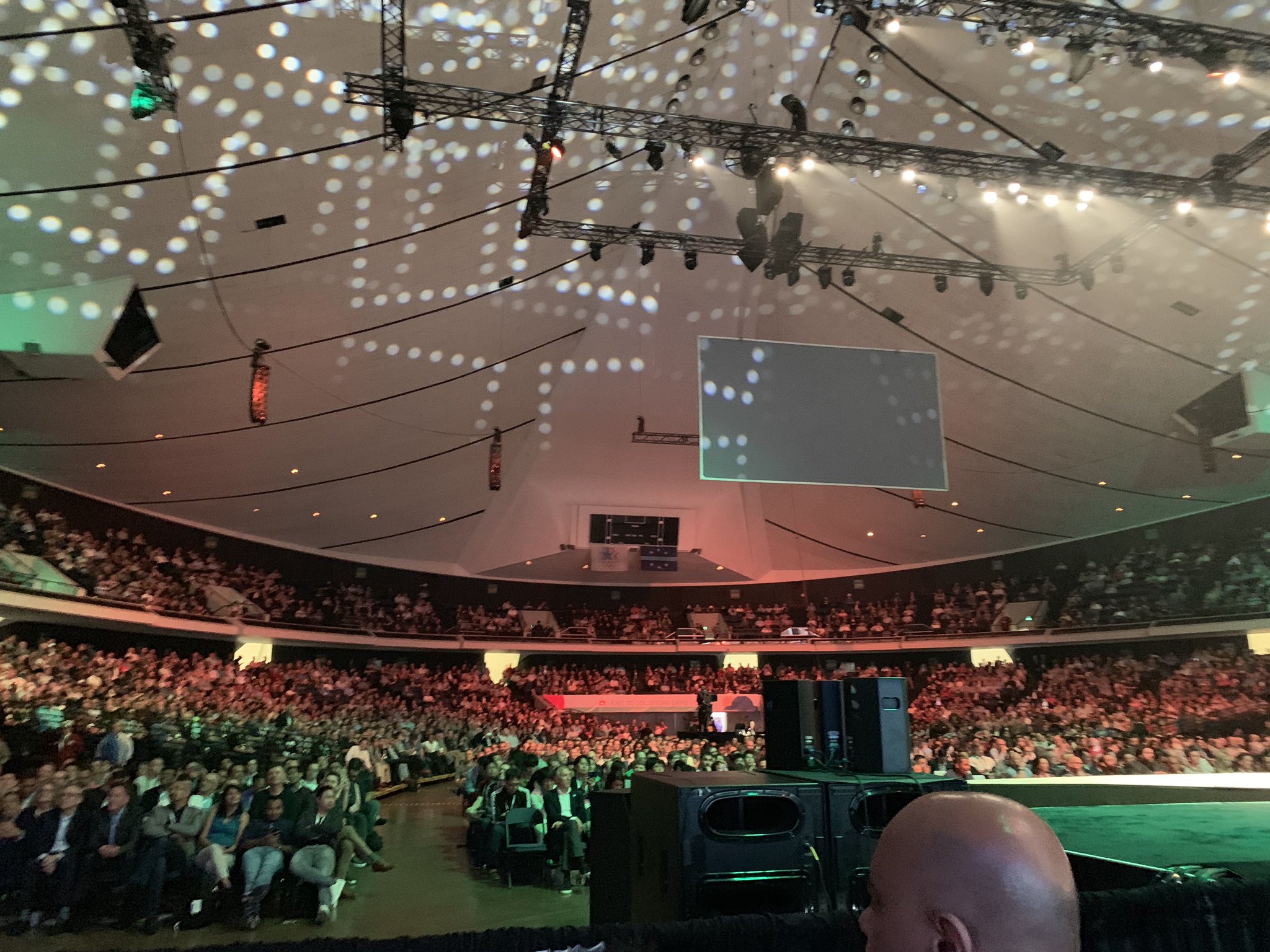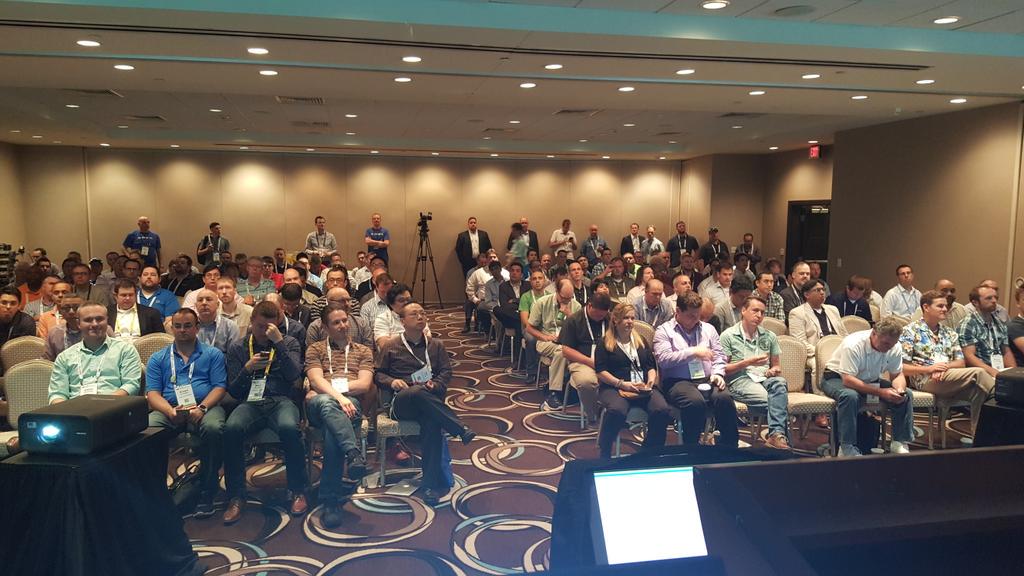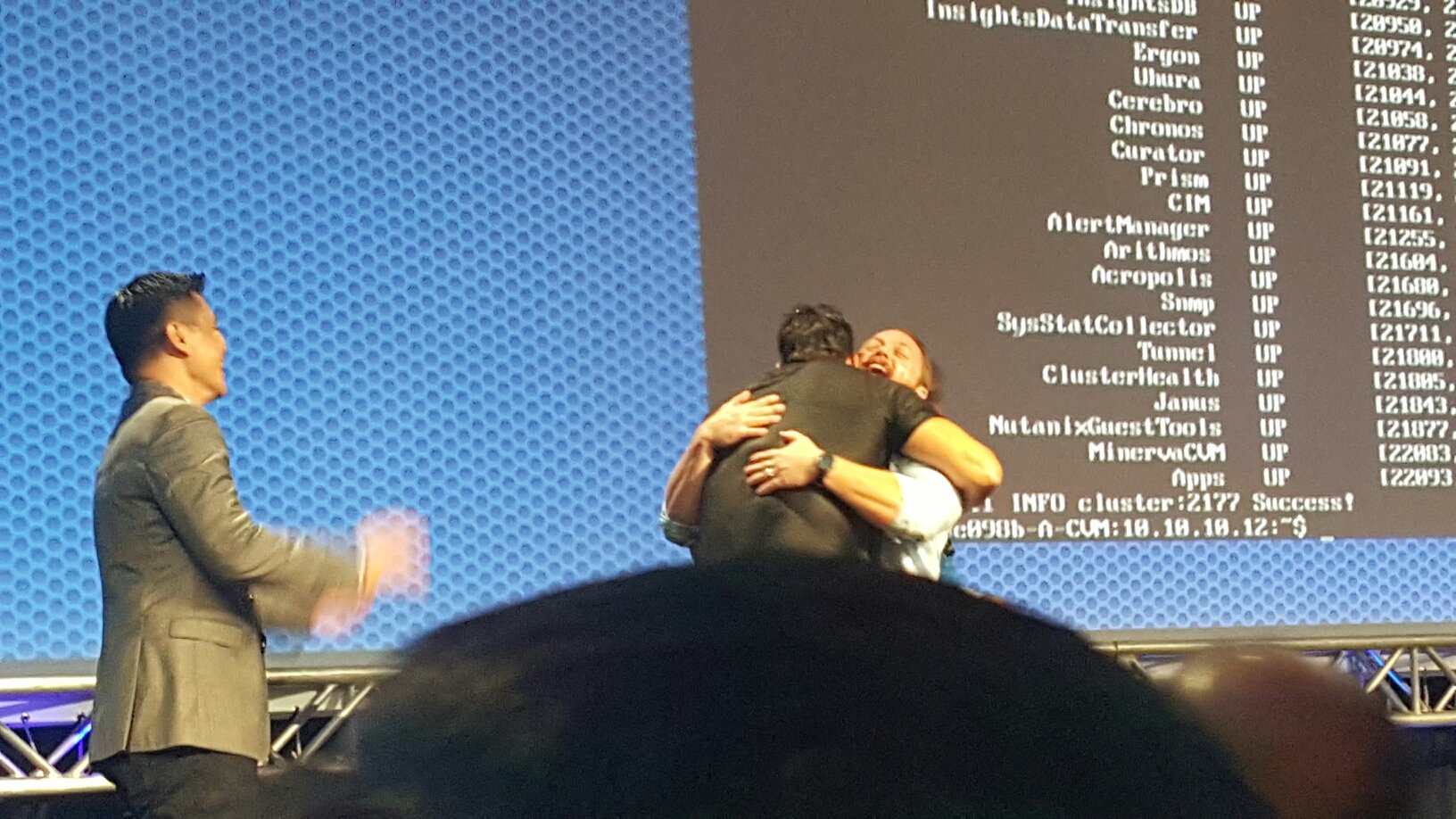Now that we understand some general presentation best practices from How to Improve Your Presentation Skills: Lessons Learned and Tips, the next step is how you can apply these in various situations. This post will discuss the different types of environments and how to approach them.
To jump to a particular presentation situation, use the following links:
- 1:1 demos (e.g., tradeshow, ad-hoc)
- 1:few demos (EBCs, meetings)
- 1:many demos (larger presentations, webinars)
- Keynotes
1:1 demos (e.g., tradeshow, ad-hoc)
These demos can be compelling because they allow you to tailor the pitch to the exact person and focus on their pain points.
Gather context a.k.a. ask questions
After introducing yourself to the individual, it’s crucial to quickly understand their background, role, familiarity with the subject and technical level. This will help determine how much background information you must provide, the language used (e.g., technical vs. non-technical), and how detailed you can go.
Using the above information, you can start thinking about some pain points that may apply to the person. Try and ask them for some of the pain points they currently have, and try to establish their needs vs. wants. If they are unwilling to provide their pain points, use your knowledge about their role and position, propose some pain points that have applied to others, and ask if they are relevant.
Identifying the pain points is one of the most critical items, as you should tailor your pitch and focus on providing solutions to their pain points. This is key to appealing to them.
Personalize
Once you’ve gotten context by asking questions, it’s essential to personalize the pitch and language used when speaking with the individual. If they are unfamiliar with the subject, provide some background context. If they are non-technical, try to keep examples simple and avoid going into too much technical detail. Finally, if they are technical, don’t shy away from going deep, but ensure you keep focus and ask if the technical level is too high or low.
The more you can “speak their language” and solve their pain points, the more effective you can be at getting them interested and appealing to them. Empathy also goes a long way; the more we can understand and feel their pain points, the more we can know how we can help them.
Collaborate
Ask them probing questions throughout the discussion and if it makes sense. If not, ask why and try to explain more suited to the unclear points.
The goal is to get them engaged and talking; the more they talk, the better (as long as you get your points across).
Don’t be afraid to eject
There will be times when there is a mismatch in who you’re talking to from a fit or feasibility perspective. Commonly, I see people get sucked into the conversation trap. With a focus on enabling viable prospects, it’s important to maximize your time effectively. And this may mean cutting the conversation short but doing so professionally.
It’s vital to “eject” professionally, as even though it may not apply to them, word of mouth is vital, and they may mention to someone who would be a good fit.
TL;DR
- Gather context a.k.a. ask questions
- Ask them for their background/familiarity with the area
- Ask about pain points and wants vs. needs
- If they are unwilling to divulge their pain points, propose some common pain points that have applied to others and ask for relevance
- Personalize
- If unfamiliar -> provide some background context
- If non-technical -> try to up-level the pitch, but don’t make it fluffy
- If technical -> don’t shy away from going deep; however, ask if too deep
- Collaborate
- Ask questions
- Does it make sense to them? If not, ask why and try to explain better.
1:few demos (EBCs, meetings)
These are more intimate settings with less than 10-15 people in attendance. All of the tips in the prior section are applicable here.
Identify personas
Before the meeting starts, try to get a list of the attendees and a debrief on who the decision makers are, who the friendlies are, who are the irrelevant individuals are, are and who the critics are. The sales team should have a good idea of who is who, and understanding that is important.
The friendlies will help emphasize your points or “sell inward” to their co-workers. Enabling them is key as they can help persuade their coworkers with much more credibility than a vendor.
The critics and opponents may or may not matter, depending on their influence. For critics with influence, it’s essential to get them clarity and turn them into a friendly. A risky but effective, approach I’ve used in the past is to ask them about their concerns and address each one point by point. If they are technical, this is where I like to go extremely deep (purposefully past their level) to establish a greater level of expertise (which won’t always be the case). For critics with little or no influence, don’t get sucked into their traps, and keep things on focus towards the decision-makers. It isn’t uncommon to see a lot of “trolls”, if they have no influence, don’t play their game.
There will also be others that are irrelevant. Don’t waste your time here; in most cases, they will be checked out anyways. However, if they try to engage, keep things on point and relevant.
Engage
The more this can turn into a collaborative session, the better. One of the core things I always express is this isn’t a vendor/customer relationship; it’s one of partnership. In the beginning of the session, I’ll level set with mentioning that, and note that this should be a collaborative discussion. To kick that process off, I’ll commonly ask them a few questions on levels of understanding and pain points/focus areas that I can use to tailor my pitch. You may get some questions or items completely unrelated. There’s a difference between answering the question and saying what you want to say; make sure you get your points across.
Just like in talking to the media, you don’t always have to answer the question, focus on your pitch and deliver that.
Bring the right content
Depending on the audience, the content that is shown will vary significantly. For example, you will want some polished slides or assets to show in more executive-level discussions. For these discussions, things like viability, vision and strategy will be much more relevant. Providing some high-level stats and overviews may help to establish the viability of the company.
For more technical talks, doing a demo is extremely important as they can see something tangible. During this flow, ask questions in regards to how this may be useful to them; drive engagement. Hint: for tips on demos check out: Nailing Your Product Demos: Tips for Preparation and Presentation.
Ask the sales team for the key points you should be focusing on (they should have a good idea about the customer’s pain points and needs), and try to accommodate those. There is likely a good reason for why they want you to focus on certain areas (e.g. they main know vendor problems they are having or pain points they were experiencing).
Again, there is no correct approach or content as every audience will be different. They key is asking questions and using that to determine your flow, doing an audible can be a powerful thing here.
TL;DR
- All of the pieces in the 1:1 demos section
- Identify participants
- Figure out the friendlies
- These will be good individuals to help provide emphasis
- Figure out the decision makers (direct or indirect)
- These are the core individuals who may make a decision (yes/no)
- Some may directly make the decision, while others may provide a decision to someone who owns the final decision
- Figure out the irrelevant, don’t waste time or get side-tracked here
- Figure out the critics/opponents
- There are two types of opponents: Those who have a say* and those who do not.
- For critics who have an impact on decision-making, convincing these individuals will be very important
- Depending on the expected potential of impact, varying emphasis on convincing accordingly. Those who are irrelevant, don’t waste time here.
- *NOTE: these are the core people you should tailor the pitch to
- Figure out the friendlies
- Engage
- The more the session can be a collaborative discussion the better
- Ask probing questions and for clarification
- Bring the right content
- Depending on the level you’ll want to prepare correctly
- Get insight from the sales team for focus areas and ask questions to validate
1:many demos (larger presentations, webinars)
These are larger sessions or webinars where you may have 100-500 attendees. Interaction with the crowd is complicated for larger presentations and should be held toward the end.
(Technical deep dive at inaugural Nutanix .Next conference, Miami - 2015)
Keep Q&A/interaction to the end
Even if you get interrupted in your discussion, keep interactions and questions to the end of the presentation. Failure to do so will result in any lack of flow to a presentation and potential failure to get your points across. I’ve fallen for this before, and I’ve seen it happen to many others before as well, don’t do it; wait until the end.
Plan
Look at the registration list and see the demographics of the people planning to attend. Information like roles, titles, and companies are all important to help gauge the level of understanding of most people in attendance. Try to establish commonalities between them, regardless of their role or company. There will likely be some things that are relevant across cohorts.
It is challenging to appeal to everyone, so establishing an approach that will work for the majority is key.
Breath and pace
Start with a big breath and ensure you’re taking them frequently. I’ve gotten up on stage multiple times and started talking without taking a deep breath, speaking short-winded. Don’t do this. Take a deep breath to ground yourself and then get into things. If you don’t make a conscious effort to do so, you’ll be speaking out of breath in no time with the nerves and adrenaline kicking in.
If you’re unfamiliar with breathing with your diaphragm, practice breathing with this at home. This is what enables you to pull in a big, low breath. If you’re familiar with weight lifting this is similar to the diaphragmatic breathing used before bracing for a lift.
Throughout your discussion, pause after key points, let things digest, and again, breathe. It may sound counterintuitive, but when you’re up there, you’re going 1000 mph, you may think you’re speaking normally, but you’re speaking like an announcer at an auction house. It may feel weird, but try to speak to the point where it feels like you’re speaking slowly. You won’t be; you’ll be speaking at a normal pace.
You may also want to record yourself giving the presentation (not to yourself but to an audience) and analyze the speed at which you thought you were speaking and the rate at which you were speaking. You’ll be surprised there is commonly a significant difference.
Emphasize
Monotone voices are a sure and quick way to lose a crowd. Don’t be afraid to emphasize critical points and mention certain items louder to draw focus. Take pauses after key points to ensure the audience has the time for it to settle in before moving to the next point.
Also, remember you aren’t a robot; show some of that personality.
TL;DR
- Keep Q&A/audience interaction to the end
- This is important as you may have people during the session bogart time on topics non-relevant to your pitch and/or the interests of others
- Plan
- Try to gather demographics (roles, titles, companies) of attendees
- Figure out commonalities between them (there may be none)
- Try to tailor content to the mass appeal (things that apply to the majority)
- Breathe and pace yourself
- A presentation isn’t a marathon, to start take a large breath and exhale
- Practice breathing with your diaphram
- When speaking, try to speak slower than you normally would as with the adrenaline you’ll be talking faster than you think
- Slow is better (but not too slow)
- TIP: Record your demos/presentations and review after the fact; compare how fast you thought you were speaking to how fast you were speaking. This will help you determine the correct pace.
Keynote demos
These are the big stage presentations where brevity, clarity and conciseness matter!

Rehearse, rehearse, rehearse
When you’re presenting in front of thousands of people, your presentation needs to look polished, and your talk track needs to be concise. Keep your sentences concise and cut out filler words. Suppose you fall ill too frequently using filler words (I used to say uhh or so); practice breathing instead of saying those words. A few will still slip, but at least not enough where it’s obvious.
I like to run through my demo flow and talk track probably 100+ times before each keynote. I’ll record myself in my room or talk through the talk track while driving. The more you practice, the more it will be ingrained in your brain and sound more natural when discussing. This may sound crazy, but when I present, I don’t think about what I’m saying; I just let my brain do its thing. Practice and repetition are what enable this.
For the demo flow, I’ll run through the flow, pause points, zoom points, and transitions between scenes.
The more you rehearse, the more you can refine the flow, key points, and talk track.
Prepare your environment
A lot of people think that event staff will just take care of everything, however, this is not the case. They are there for things like AV, but your demo environment is something you must manage.
Here are some key items:
- Plug your computer in
- Disable sleep
- Turn on do not disturb
- Use wired and dedicated internet (DO NOT use event WIFI!)
- Tape all connections to the device (you don’t want any movement to disconnect things). The event staff will have plenty of gaffing tape that can be used here.
Prepare yourself
Don’t be the fool that brings their phone on stage. It’s a distraction and may cause interference or an interruption if someone calls.
You’ll want to choose an outfit that fits your personality and will “stand out” from the backdrop. If your background is black, probably best not to wear a full black turtleneck. You’ll also want to make sure to use the makeup service (yes, even us dudes) as they will ensure you look your best on stage. The most important thing here is the “anti-shine” which will make sure your skin looks good and not greasy. Shine is a real thing, use this service.
Be human, but professional
At this scale, it’s important to be extremely professional, but don’t forget to show some personality; we are human. I used to work with a good friend, Sunil Potti, who was a great example of this (he could honestly be a talk show host). He would find a good balance between humor, personality, and professionalism.
Breathe
I mentioned this in the previous section, but this is a presentation on steroids, and the adrenaline will be flowing like the Amazon River; you’ll need to focus on flow and timing more than ever.
Again, practice in your room, time yourself, practice in front of a group, listen to recordings and try again.
Have fun!
These are unique opportunities, the more fun you can have with things, the better. We aren’t robots, and having some personality is ok.
(In the above photo David Blaine is hugging me after being stuck underwater for 7 minutes 18 seconds while I was doing my demo)
TL;DR
- Rehearse, rehearse, rehearse
- When you’re presenting in front of thousands of people, your presentation needs to look polished
- Keep sentences short and consumable
- Cut out filler words
- Environment prep
- Plug your computer in
- Use wired and dedicated internet (DO NOT use event WIFI!)
- Tape all connections to the device (you don’t want any movement to disconnect things)
- Prepare
- Don’t bring your phone up on stage
- Use the makeup services prior
- Yes, even us dudes, when you’re up on stage, it’s common to “shine” and look greasy; they can fix that
- Be human but professional
- It’s ok to show personality
- However, minimize humor unless you’re funny - most people think they are but aren’t like me (I’m guilty of this)
- Breathe and pace yourself
- Follow the steps mentioned in the previous section
- You may think you’re speaking slowly, but you are speaking much faster than you think
Learn More
Other posts in this series:







